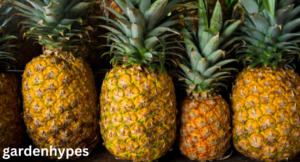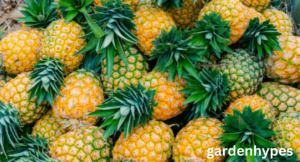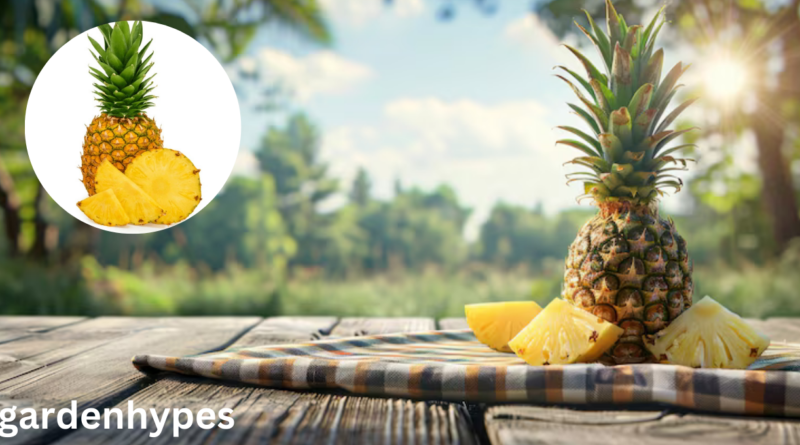Pineapple Season Everything You Need to Know
Introduction
Pineapples are one of the most beloved tropical fruits in the world, instantly recognizable for their spiky exterior and sweet, juicy flesh. But just like many fruits, pineapples have a season when they are at their freshest, juiciest, and most flavorful. Understanding pineapple season isn’t just useful for food lovers—it’s also important for anyone who wants to make the most of this tropical treasure.
click in link Apple Season
So, why does pineapple season matter? Well, while pineapples are available year-round in many supermarkets thanks to global trade, not all pineapples taste the same. Those harvested in peak season are sweeter, richer, and often more affordable. On the other hand, out-of-season pineapples may be shipped long distances, picked before ripening, and lack the vibrant flavor you expect.
Globally, the pineapple has made its mark in cuisines, drinks, and desserts, becoming a staple of summer barbecues, tropical cocktails, and exotic fruit salads. From Hawaii’s famous plantations to Costa Rica’s booming exports, pineapple season plays a huge role in farming, trade, and culinary traditions.
In this article, we’ll break down everything you need to know—from when pineapples are in season, to how to pick the perfect fruit, and even some tasty recipes to enjoy them.
When is Pineapple Season?
The big question for many fruit lovers is: When exactly is pineapple season? The answer depends on where you live and where your pineapples are coming from.
In tropical countries—where pineapples grow naturally—harvest can happen multiple times a year. For example, in Hawaii, the peak pineapple season typically runs from March through July, though smaller harvests may happen at other times. In Costa Rica, which is one of the world’s largest exporters of pineapples, the season is more spread out, with availability nearly year-round thanks to the climate.
For people living in the U.S. or Europe, pineapple season is often linked to import cycles. Fresh pineapples are most abundant during late spring and summer months, making that the ideal time to buy for the best flavor. However, thanks to global shipping and large-scale farming, pineapples can still be found in grocery stores in December just as easily as in June—though the taste and quality may vary.
The bottom line? If you want the sweetest, juiciest pineapples, look for them in late spring and summer when they’re at their natural peak.
Best Months for Fresh Pineapples
While pineapples technically grow year-round in many tropical climates, certain months consistently deliver the best quality fruit.
- In Hawaii, the best months are March through July.
- In Costa Rica, pineapples are widely available year-round, but the sweetest harvests often come between March and June.
- In the Philippines and Thailand, peak harvest runs from April to June, coinciding with the hot summer months.
- In India, pineapples are usually harvested from May to July, especially in states like Kerala and Assam.
This means that no matter where you are in the world, there’s usually a pineapple harvest happening somewhere, ensuring a steady global supply. However, eating pineapples during their true season means enjoying them at their absolute best.
It’s also worth noting that pineapple varieties can taste different depending on the season. For instance, some types are naturally more acidic, while others have a sweeter, almost honey-like flavor. If you’re a pineapple lover, it’s worth experimenting with different varieties and seasonal harvests to find your personal favorite.
click in link Apple Season

Where Do Pineapples Grow Best?
Pineapples thrive in warm, tropical climates with plenty of sunshine, well-drained soil, and consistent rainfall. This is why the world’s top producers are located near the equator.
The largest pineapple-producing countries include:
- Costa Rica – The global leader, exporting millions of tons each year.
- Philippines – Famous for sweet, juicy pineapples used in both fresh and canned forms.
- Thailand – A top exporter, especially for processed pineapple.
- India – Produces regional varieties with distinct flavors.
- Hawaii (USA) – Once the world leader, now a niche producer but still iconic.
These regions offer the ideal growing conditions: sandy, acidic soil, warm temperatures (65°F–95°F), and lots of sunlight. Unlike apples or pears, pineapples don’t grow on trees—they grow on the ground, emerging from a central plant that takes about 18–24 months to fully mature.
Knowing where your pineapple comes from can actually help you judge its flavor. For instance, Costa Rican pineapples are often larger and more consistently sweet, while Hawaiian pineapples have a distinct tangy-sweet balance prized by locals.
How to Pick the Perfect Pineapple in Season
There’s nothing worse than buying a pineapple that looks great on the outside but turns out bland or sour inside. Luckily, picking the perfect pineapple isn’t as hard as it seems—you just need to know a few tricks.
click in link Apple Season
Here are the main things to check:
- Color – A ripe pineapple usually has a golden-yellow color at the base. If it’s too green, it may be underripe.
- Texture – The skin should be firm but slightly soft to the touch. Overly hard pineapples may be unripe, while soft spots may mean it’s overripe.
- Smell – A sweet, tropical aroma near the base indicates ripeness. If there’s no smell, it may not be ready. If it smells fermented, it’s too ripe.
- Leaves – Fresh green leaves at the crown suggest freshness. Dry, brown leaves may mean the pineapple is old.
- Weight – A heavier pineapple usually means it’s juicier inside.
Common mistakes to avoid:
- Don’t rely on the ability to pull out leaves easily—it’s not always a true sign of ripeness.
- Avoid pineapples that look dry, wrinkled, or have moldy spots.
- Don’t store uncut pineapples in the fridge—they ripen better at room temperature.

By following these simple steps, you’ll always end up with a pineapple that’s bursting with flavor—perfect for eating fresh, blending into smoothies, or tossing on the grill.
faqs
- What month is best for pineapples?
The best months for pineapples vary by country, but in general, late spring to mid-summer is peak season. For example, in Hawaii, pineapples are sweetest between March and July, while in the Philippines and Thailand, the best harvest is from April to June. Globally, pineapples are most flavorful during warm months when they naturally thrive. - Can pineapples be grown at home?
Yes, you can grow pineapples at home, especially in warm, tropical, or subtropical climates. Many people grow them from the leafy crown of a store-bought pineapple. However, they take patience—pineapples usually need 18 to 24 months to fully mature and produce fruit. Indoors, they can be grown in pots as ornamental plants, though fruit production may be limited. - How long do pineapples last after picking?
A freshly harvested pineapple typically lasts 3–5 days at room temperature before it starts losing quality. If stored in the refrigerator, it can last up to 7–10 days. Once cut, pineapple should be stored in an airtight container in the fridge and consumed within 3–4 days for the best taste and freshness. - Are pineapples sweeter in certain countries?
Yes, the sweetness of a pineapple depends on its variety and growing conditions. Costa Rican pineapples are known for being consistently sweet and juicy, while Hawaiian pineapples often have a balanced sweet-tart flavor. Regional climate, soil type, and farming practices all influence how sweet a pineapple will be. - What are the best pineapple varieties?
Some of the most popular pineapple varieties include:
- Smooth Cayenne – Widely grown, juicy, and mildly sweet.
- MD2 (Golden Pineapple) – Extra sweet and low in acidity; commonly exported.
- Queen Pineapple – Smaller, very sweet, and aromatic.
- Red Spanish – More fibrous, often used for canning.
